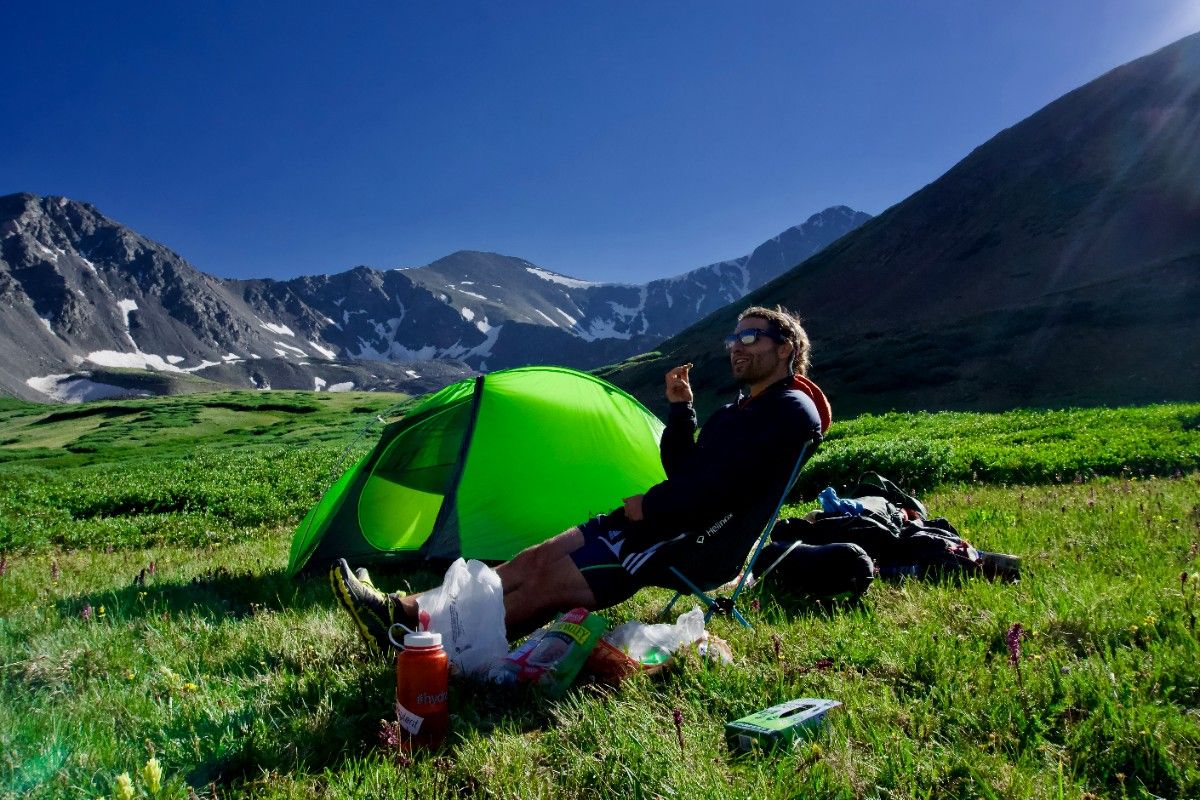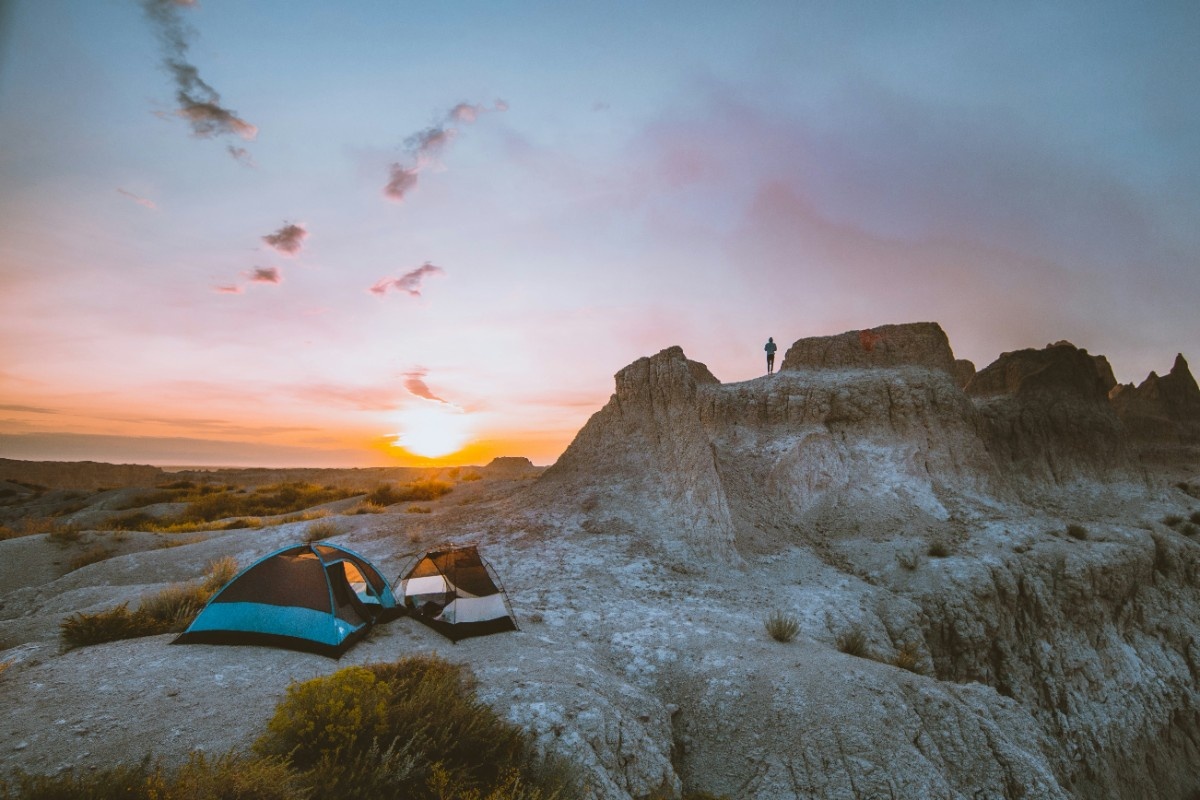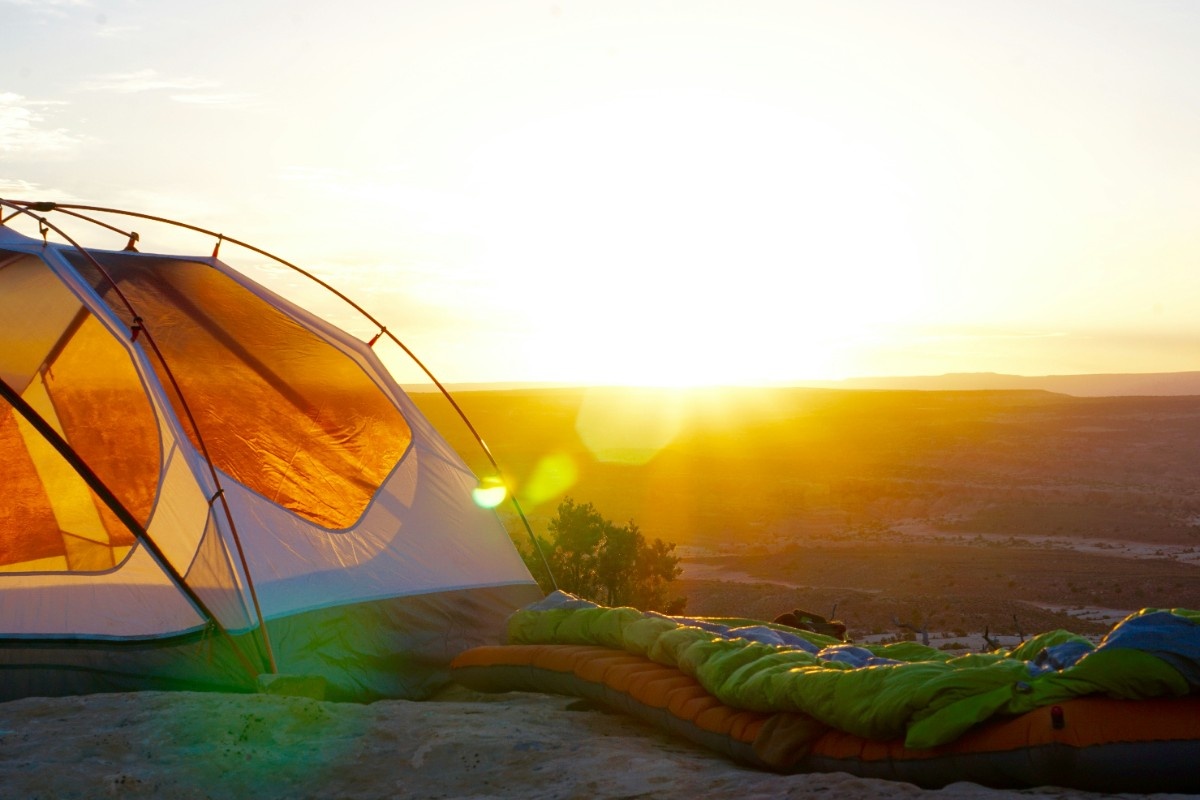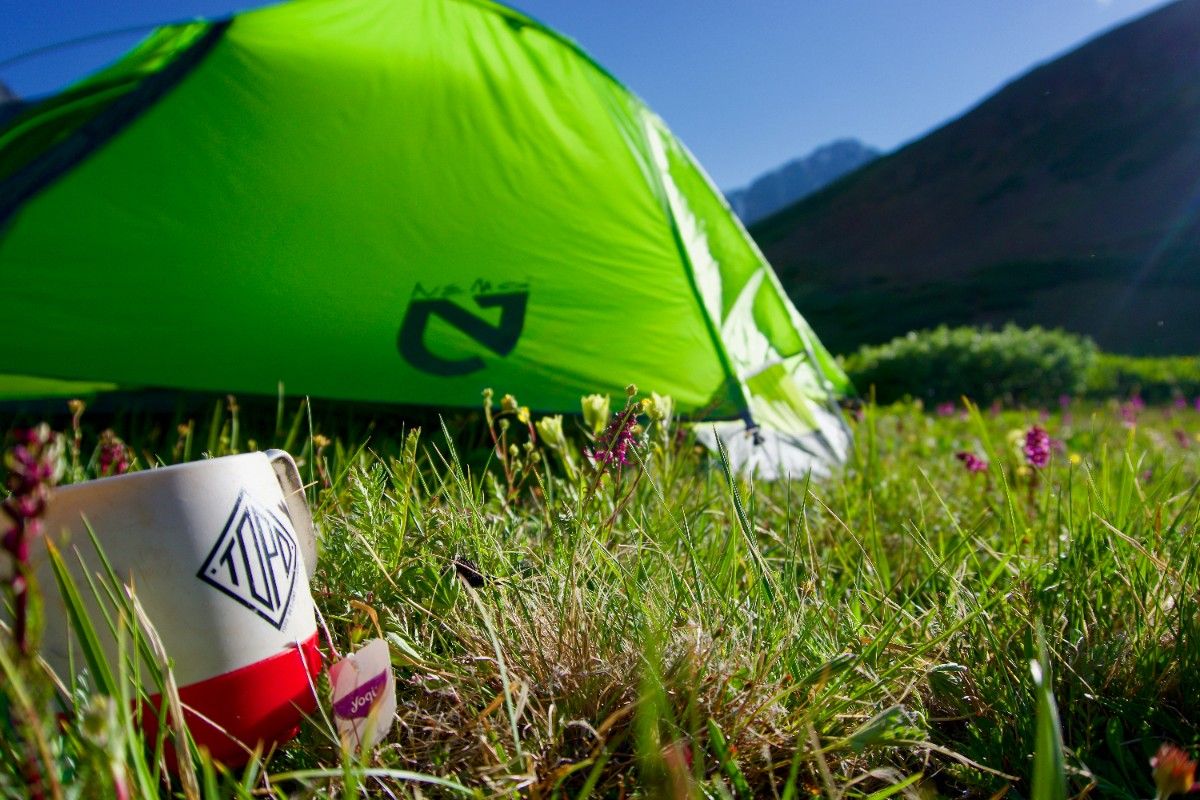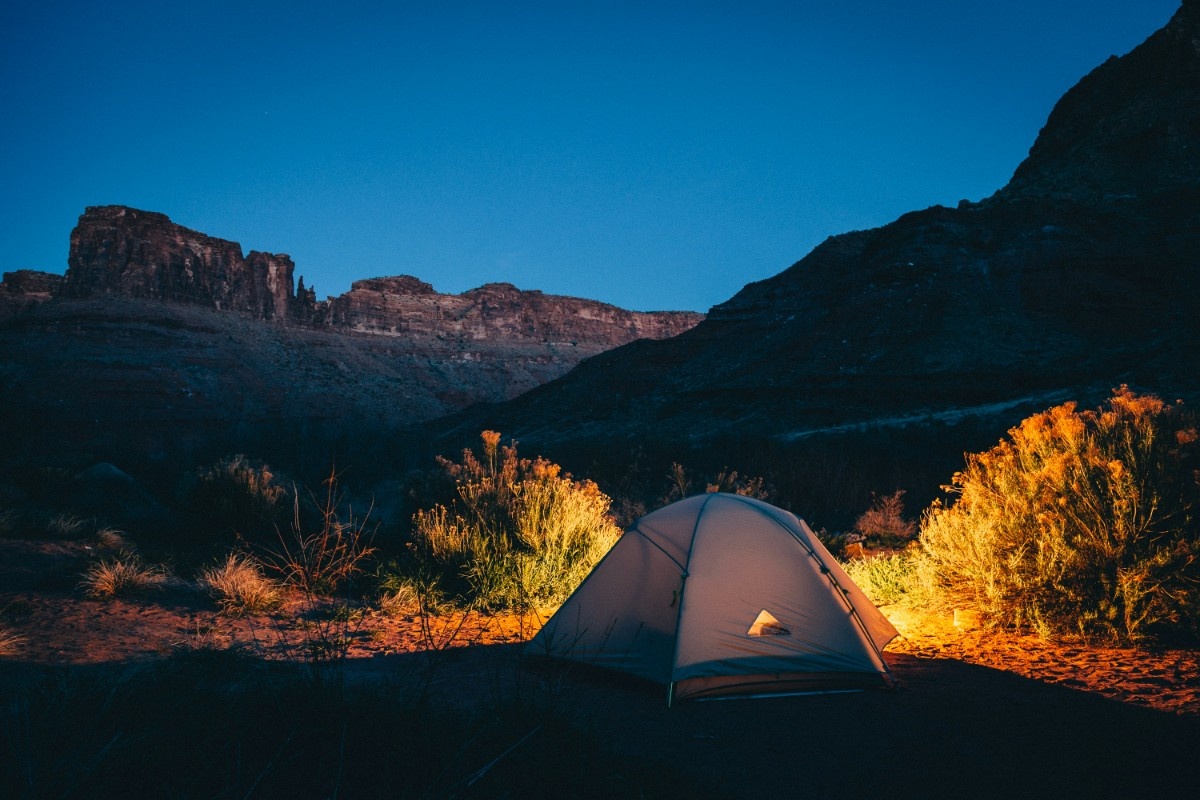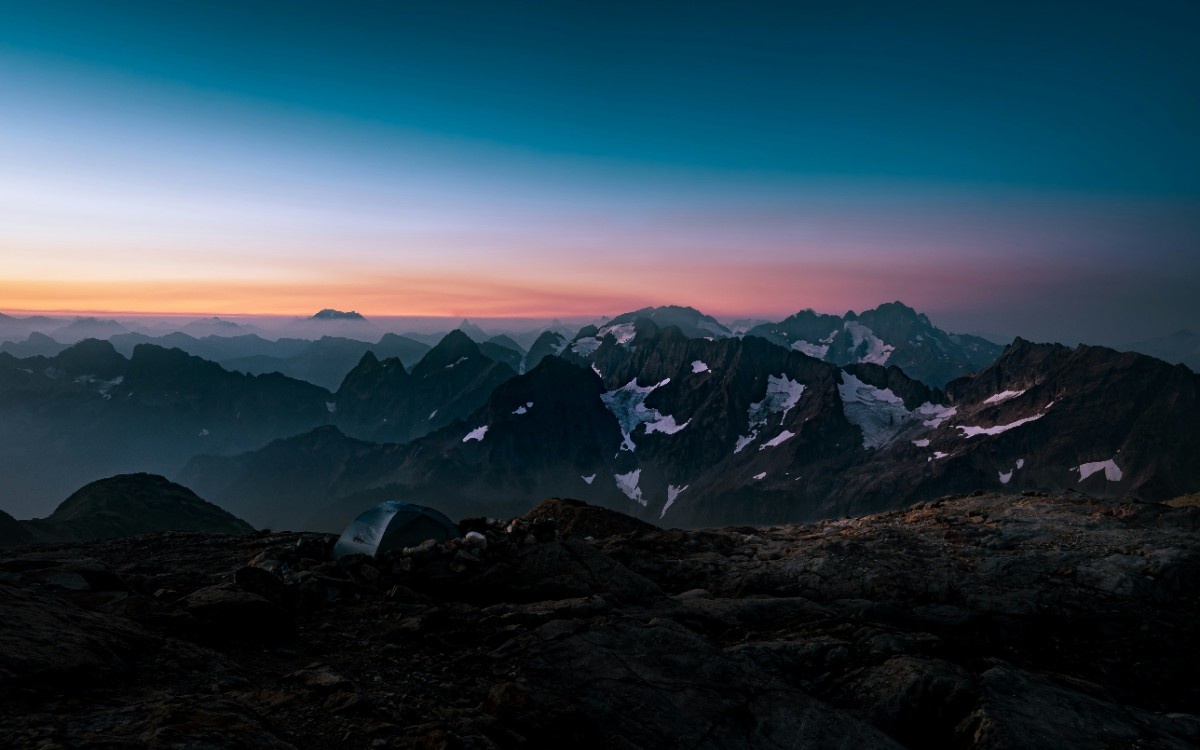Understanding Backpacking Tents: The Basics
Introduction to Backpacking Tents
Backpacking tents are essential pieces of gear for outdoor enthusiasts who venture into the wilderness carrying all their supplies on their backs. These portable shelters are designed to be lightweight, compact, and durable, providing a comfortable haven after a long day of trekking. Unlike car camping tents, backpacking tents prioritise minimal weight and pack size without compromising on protection from the elements. They are engineered to withstand various weather conditions while being easy to carry over long distances.
The primary purpose of a backpacking tent is to offer shelter from rain, wind, and insects, as well as provide privacy and a sense of security in the great outdoors. These tents come in various sizes, from snug 1 person backpacking tents to more spacious 3 person backpacking tents, catering to solo adventurers and small groups alike. The design and features of backpacking tents have evolved significantly over the years, with modern tents offering an impressive balance of weight, durability, and functionality.
When considering a backpacking tent, it's crucial to understand its basic components and how they contribute to the overall performance of the shelter. This knowledge will help you make an informed decision when choosing the best backpacking tent for your needs and ensure you can use it effectively in the field.
Anatomy of a Backpacking Tent
A typical backpacking tent consists of several key components, each playing a vital role in the tent's overall performance. Understanding these elements will help you appreciate the design of your tent and use it more effectively.
The tent body is the main structure of the tent, usually made of lightweight, breathable fabric with mesh panels for ventilation. It provides the primary living space and offers protection from insects and privacy. The floor of the tent body is typically made of more durable, waterproof material to prevent moisture from seeping in from the ground.
The rainfly is a waterproof cover that goes over the tent body, providing protection from rain and wind. It's usually made of coated nylon or polyester and can be full-coverage (extending to the ground) or partial-coverage (leaving some of the tent body exposed). A full-coverage rainfly offers better weather protection but can reduce ventilation.
Tent poles give the tent its structure and shape. Modern backpacking tents often use lightweight materials like aluminium or carbon fibre for their poles. The pole configuration can vary, with designs ranging from simple two-pole structures to more complex geodesic arrangements for improved stability in harsh conditions.
Stakes anchor the tent to the ground, ensuring it stays in place even in windy conditions. While basic stakes often come with the tent, many backpackers opt for lighter or more durable aftermarket stakes.
Guy lines are cords attached to the rainfly or tent body that can be staked out to increase stability and improve the tent's performance in windy conditions. Proper use of guy lines can significantly enhance a tent's weather resistance.
Vestibules are covered areas outside the main tent body, usually created by the rainfly. They provide valuable storage space for gear, helping to keep the interior of the tent dry and uncluttered.
Understanding these components and how they work together will help you set up your tent correctly and make the most of its features. It also allows you to assess the strengths and potential weaknesses of different tent designs when shopping for a new backpacking tent.
Key Features to Consider
When evaluating backpacking tents, several key features can significantly impact your camping experience. Understanding these features will help you choose a tent that best suits your needs and preferences.
Weight is often the primary consideration for backpackers. The lightest backpacking tent options can weigh less than a kilogram, while more robust models might reach two to three kilograms. The trade-off is usually between weight and features or durability. Consider your priorities and the type of trips you'll be taking when deciding how much weight you're willing to carry.
Packed size is another crucial factor. A tent that packs down small will take up less space in your backpack, leaving more room for other essential gear. Look for tents with compact pole sections and stuff sacks designed for efficient packing.
Ease of setup is important, especially when you're tired after a long day of hiking or setting up in challenging weather conditions. Many modern backpacking tents feature colour-coded poles and clips or intuitive designs that can be pitched quickly, even by one person.
Ventilation is key to managing condensation inside the tent. Look for designs with multiple mesh panels and adjustable vents in the rainfly. Good airflow helps regulate internal temperature and humidity, reducing the likelihood of waking up to a damp sleeping bag.
Interior space and layout can greatly affect your comfort. Consider the floor dimensions, peak height, and overall volume of the tent. Some designs maximise liveable space through near-vertical walls or strategic pole placement.
Doors and vestibules contribute to the tent's liveability. Multiple doors can make entry and exit easier when sharing the tent, while vestibules provide valuable storage space for gear.
Weather resistance is crucial for keeping you dry and comfortable. Look for tents with quality waterproof coatings, taped seams, and designs that shed wind and rain effectively.
Durability is important, especially if you plan to use your tent frequently or in challenging conditions. Pay attention to the denier (thickness) of the fabrics used and the overall construction quality.
By carefully considering these features in relation to your specific needs and the conditions you'll be camping in, you can select a backpacking tent that will serve you well on your outdoor adventures. Remember, the best tent for you is one that balances these features in a way that aligns with your priorities and typical usage scenarios.
Choosing the Right Size: From Solo to Group Backpacking Tents
Selecting the Ideal Tent Capacity
Choosing the right size backpacking tent is crucial for your comfort and enjoyment in the wilderness. Tent capacity ranges from snug 1 person backpacking tents to more spacious 3 person backpacking tents and beyond. When selecting the ideal tent capacity, consider not just the number of people who will be using the tent, but also your overall camping style, the amount of gear you need to store, and your preferences for personal space.
A 1 man backpacking tent is designed for the solo adventurer who prioritises minimal weight and pack size. These tents offer just enough space for one person to sleep comfortably, often with a small vestibule for gear storage. The advantages of a 1 person backpacking tent are clear: they're usually the lightest and most compact options available, which means less weight in your pack and more energy for the trail. However, the trade-offs are equally apparent. Space is at a premium in these tents, which can feel claustrophobic for some users. There's little room for gear inside the sleeping area, and changing clothes can be a bit of a contortionist act.
Moving up in size, a 2 person backpacking tent offers more versatility. This is perhaps the most popular option, suitable for solo backpackers who want extra space, couples, or two friends sharing a tent. A 2 man backpacking tent provides a significant increase in liveable space compared to its single-person counterpart, usually without a prohibitive weight penalty. For solo users, it provides ample room for gear storage inside the tent, making it easier to keep everything dry and organised. For two people, it offers enough space to sleep comfortably, although it may be a snug fit depending on the specific model.
For those needing even more space, a 3 person backpacking tent is the next step up. These tents are ideal for small groups, couples who want extra room, or families with a young child. A 3 man backpacking tent offers significantly more floor space and headroom than smaller models, making them much more comfortable for extended stays or when bad weather keeps you tent-bound.
When choosing between these sizes, consider not just the number of people who will be using the tent, but also your overall camping style and priorities. If you value comfort and space over minimising weight, you might opt for a larger tent than strictly necessary. Conversely, if you're focused on covering long distances with as little weight as possible, you might choose to squeeze into a smaller tent.
Remember that tent capacity ratings are usually based on a tight fit. A 2 person tent will fit two people sleeping side by side, but there may be little extra room. If you or your camping partners are tall or broad-shouldered, or if you simply prefer more personal space, consider sizing up. By carefully considering your typical usage scenarios and priorities, you can choose a tent that will serve you well on countless adventures.
Solo Backpacking Tents: Maximising Efficiency
For the solo backpacker, choosing the right tent is all about balancing comfort, weight, and functionality. A 1 person backpacking tent is designed to provide just enough shelter for a single occupant and their gear, prioritising minimal weight and pack size above all else. These tents are the go-to choice for long-distance hikers, through-hikers, and anyone who values travelling as light as possible.
The primary advantage of a 1 man backpacking tent is its weight and compactness. The lightest models can weigh less than 500 grams, making them barely noticeable in your pack. This weight saving can make a significant difference in your overall comfort and energy levels, especially on longer trips or challenging terrain. Additionally, these tents often have a very small packed size, leaving more room in your backpack for other essential gear.
Another benefit of solo tents is their ease of setup. With their simple designs and minimal components, many 1 person backpacking tents can be pitched in just a few minutes, even by a single person in less-than-ideal conditions. This quick setup can be a real boon when you're tired after a long day of hiking or when you're racing against incoming bad weather.
However, the minimalist nature of solo tents does come with some trade-offs. Space is at a premium, with just enough room to sleep and perhaps store some small items inside. Changing clothes or organising gear can be challenging, and there's little room to sit up or move around. Some users may find this confined space claustrophobic, especially during extended periods of bad weather when you're stuck inside the tent.
When choosing a 1 person backpacking tent, consider the following factors:
- Interior space: Look at both floor dimensions and peak height. Some designs maximise liveable space through near-vertical walls or strategic pole placement.
- Vestibule size: A good vestibule can greatly enhance the usability of a solo tent by providing covered storage space for gear.
- Ease of entry and exit: Some solo tents can be awkward to get in and out of, especially for larger individuals. Look for designs with large, easy-to-use doors.
- Ventilation: Good airflow is crucial in small tents to manage condensation. Look for models with multiple mesh panels and adjustable vents.
- Weather resistance: Ensure the tent can handle the conditions you're likely to encounter. Some ultralight solo tents sacrifice some weather protection to achieve their low weight.
For solo backpackers who want a bit more space without a significant weight penalty, consider a lightweight backpacking tent designed for 1-2 people. These offer more interior room and often better liveability features, while still keeping weight to a minimum. They can be a good compromise for those who find true solo tents too confining or who occasionally share their tent with a partner.
Remember, the best 1 person backpacking tent for you is one that matches your personal preferences and the conditions you'll be camping in most often. By carefully considering your needs and priorities, you can find a solo tent that provides the perfect balance of weight savings and comfort for your adventures.
Material Matters: Fabric and Construction of Backpacking Tents
Fabrics: The Foundation of Your Shelter
The materials used in backpacking tents play a crucial role in determining their performance, durability, and weight. Understanding these materials can help you make an informed decision when choosing the best backpacking tent for your needs. The two primary fabrics used in modern backpacking tents are nylon and polyester, each with its own set of characteristics and advantages.
Nylon is generally lighter and more flexible, making it a popular choice for ultralight tents. It's also typically more durable and abrasion-resistant than polyester. However, nylon has a tendency to absorb water, which can make it sag when wet. It's also more susceptible to UV degradation over time. Despite these drawbacks, nylon remains a favourite for many lightweight backpacking tent manufacturers due to its excellent strength-to-weight ratio.
Polyester, on the other hand, doesn't absorb as much water, maintaining its shape better in wet conditions. It's also more resistant to UV damage, which can be beneficial for tents that see a lot of sun exposure. However, polyester is usually heavier than nylon and not quite as strong. This makes it a good choice for backpacking tents that prioritise weather resistance and longevity over minimal weight.
Both nylon and polyester are often treated with silicone (creating silnylon or silpoly) to enhance their water resistance and durability. Some manufacturers use proprietary fabric blends or treatments to optimise performance. For example, Dyneema Composite Fabric (DCF), formerly known as Cuben Fiber, is an ultralight and extremely strong material used in some high-end lightweight backpacking tents. While expensive, DCF offers unparalleled strength-to-weight ratio and natural water resistance.
The rainfly, which provides the primary weather protection, is typically made from similar materials to the tent body but with a waterproof coating. This is often polyurethane (PU) or silicone, or sometimes both (as in Si/PU coatings). Silicone coatings are generally more durable and effective but also more expensive.
Tent floors are usually made from heavier, more durable versions of the same materials used in the body and fly. They often have higher waterproof ratings to withstand ground moisture and abrasion. Look for reinforced floors in backpacking tents designed for rugged conditions.
When evaluating tent fabrics, pay attention to the denier rating, which indicates the thickness of the fibres. Higher denier fabrics are generally more durable but also heavier. The best backpacking tents strike a balance between durability and weight that suits your specific needs and usage scenarios.
Poles and Stakes: The Skeleton of Your Tent
The structural components of your backpacking tent, primarily the poles and stakes, are just as important as the fabric in determining its performance and reliability. These elements give your tent its shape, stability, and ability to withstand challenging weather conditions.
Tent poles are typically made from one of three materials: aluminium, carbon fibre, or fibreglass. Aluminium poles are the most common choice for backpacking tents, offering a good balance of strength, weight, and cost. They're durable and can withstand significant stress without breaking. Higher-end aluminium poles, like those made from DAC Featherlite NSL, provide excellent strength-to-weight ratios, making them popular in lightweight backpacking tents.
Carbon fibre poles are the lightest option but also the most expensive. They're incredibly strong for their weight but can be brittle if bent too far. You'll often find carbon fibre poles in high-end ultralight tents where minimising weight is a top priority. However, their higher cost and potential for catastrophic failure (rather than bending like aluminium) means they're not as widely used.
Fibreglass poles are sometimes found in budget backpacking tents. They're inexpensive but heavier and less durable than aluminium or carbon fibre. They're generally not recommended for serious backpacking use, especially in challenging conditions.
The pole configuration of a tent significantly impacts its stability and liveable space. Designs range from simple two-pole structures to more complex geodesic arrangements. More poles generally mean more stability and better performance in adverse weather, but also more weight. Some ultralight designs, particularly in 1 person backpacking tents, use trekking poles for support to save weight.
Tent stakes are another crucial component. While basic aluminium stakes often come with the tent, many backpackers opt for lighter or more durable aftermarket stakes. Aluminium is again a popular choice, offering a good balance of weight and strength. Titanium stakes are lighter but more expensive. Steel stakes are very strong but heavy, making them better suited to car camping than backpacking.
When evaluating poles and stakes, consider the conditions you'll be camping in most often. If you frequently camp in windy areas or at high altitudes, prioritise robust pole structures and high-quality stakes. For ultralight backpacking, every gram counts, so lightweight poles and minimal but effective stake designs become crucial.
Remember that the best pole and stake configuration is one that provides the stability you need for your expected conditions while keeping weight to a minimum. Some backpacking tents offer the flexibility to add extra poles or guy lines for increased stability in severe weather, allowing you to adapt to conditions as needed.
Weather Warriors: Seasonal Considerations for Backpacking Tents
Three-Season Tents: Versatile Performers
Three-season backpacking tents are the workhorses of the outdoor world, designed to handle a wide range of conditions typically encountered in spring, summer, and autumn. These versatile shelters strike a balance between weather protection, ventilation, and weight, making them suitable for most backpacking trips.
The design of a three-season tent usually includes a good mix of solid fabric and mesh panels. The mesh allows for excellent airflow, which helps manage condensation and keeps the tent cool in warm weather. This ventilation is crucial for comfort during summer camping trips and can help prevent the build-up of moisture inside the tent.
The rainfly on a three-season tent typically extends close to the ground, providing good protection from rain while still allowing for ventilation. Many designs incorporate vestibules, which offer valuable storage space for gear while keeping it protected from the elements. This feature is particularly useful in 2 person backpacking tents or larger, where multiple campers need to store their equipment.
Three-season tents are ideal for a wide range of backpacking scenarios. They're suitable for everything from desert camping to mountain treks, as long as you're not expecting extreme winter conditions. Their versatility makes them a great choice for backpackers who camp in a variety of environments throughout the year.
However, three-season tents do have their limitations. In heavy storms or strong winds, they may not provide the same level of protection as more robust four-season models. They're also not designed to handle significant snow loads, which can be a problem if you're camping at high altitudes or in areas where unseasonable snow is a possibility.
When choosing a three-season backpacking tent, consider features that enhance its versatility. Look for models with adjustable ventilation options, allowing you to fine-tune airflow based on conditions. A full-coverage rainfly that can be rolled back in good weather can provide flexibility for different climates.
For those who occasionally camp in more challenging conditions, some manufacturers offer "3+ season" or "extended season" tents. These fall somewhere between true three-season and four-season models. They typically offer more weather protection than a standard three-season tent, with features like stronger poles and fewer mesh panels, but without the full robustness (and weight) of a four-season tent.
Remember, the best three-season backpacking tent for you will depend on your specific needs and the conditions you most often camp in. By carefully considering your typical usage scenarios, you can choose a tent that provides the right balance of protection, ventilation, and weight for your adventures.
Four-Season Tents: Extreme Weather Shelters
For those who plan to camp in winter conditions or at high altitudes where severe weather is likely, a four-season tent (also known as a mountaineering tent) is the way to go. These backpacking tents are engineered to withstand harsh winter storms, heavy snow loads, and fierce winds, providing a safe haven in the most challenging environments.
Four-season tents typically feature a more robust structure with additional poles and fewer mesh panels compared to their three-season counterparts. This design allows them to stand up to heavy snow loads and high winds without collapsing. The rainfly often extends all the way to the ground, and some models include snow skirts for extra protection against blowing snow.
The fabrics used in four-season tents are usually heavier and more durable than those found in three-season tents. This increased durability comes at the cost of added weight, but it's a necessary trade-off for the level of protection these tents provide. Many four-season tents use ripstop nylon with heavy waterproof coatings to withstand driving snow and rain.
The pole structure of a four-season tent is crucial to its performance. Many use a geodesic or semi-geodesic design, which provides excellent stability in high winds. The poles themselves are often thicker and stronger than those used in three-season tents, able to support heavy snow loads without bending or breaking.
Ventilation in four-season tents is carefully designed to provide adequate airflow while minimising heat loss. While they typically have fewer mesh panels than three-season tents, they often feature adjustable vents that can be opened or closed as needed. Proper ventilation is crucial in winter camping to manage condensation, which can be a significant issue in cold weather.
When choosing a four-season backpacking tent, consider the specific conditions you'll be facing. If you're planning on true mountaineering or winter expeditions, look for tents with the strongest possible pole structure and the ability to withstand extreme winds and snow loads. For less severe winter camping or high-altitude summer trips, a lighter four-season tent or a robust three-season model might suffice.
Keep in mind that four-season tents are often overkill for milder conditions. Their reduced ventilation and heavier weight can make them uncomfortable in warmer weather. If you only occasionally camp in winter or at high altitudes, consider whether a sturdy three-season tent might meet your needs, perhaps supplemented with extra guy lines and snow stakes for those few trips into more challenging conditions.
Remember, while four-season tents excel in harsh weather, they come with significant weight penalties. A typical four-season 2 person backpacking tent might weigh 50% more than its three-season counterpart. This extra weight can be a challenge on long backpacking trips, so carefully consider whether you need this level of protection for your planned adventures.
Ultimately, the best four-season backpacking tent for you will depend on the specific conditions you expect to encounter and your tolerance for carrying extra weight. By carefully evaluating your needs and the available options, you can choose a tent that will keep you safe and comfortable in even the most challenging mountain environments.
Lightweight Champions: Ultralight Backpacking Tents
The Quest for the Lightest Backpacking Tent
In the world of backpacking, where every gram counts, ultralight backpacking tents have gained immense popularity. These featherweight shelters push the boundaries of material technology and design to provide protection at the minimum possible weight. For many backpackers, particularly those covering long distances or tackling challenging terrain, the lightest backpacking tent can make a significant difference in their overall pack weight and hiking experience.
Ultralight backpacking tents typically weigh less than 1.5 kilograms, with some models dipping below the 1 kilogram mark. This is achieved through a combination of innovative materials, minimalist designs, and sometimes a trade-off in spaciousness or features. The quest for the ultimate lightweight backpacking tent has driven manufacturers to explore new materials and construction techniques, resulting in shelters that would have seemed impossibly light just a few years ago.
One of the key materials enabling the ultralight revolution is Dyneema Composite Fabric (DCF), formerly known as Cuben Fiber. This non-woven fabric is incredibly strong for its weight and naturally waterproof. Tents made from DCF can be incredibly light while still offering excellent weather protection. However, DCF is expensive and less durable than traditional nylon or polyester fabrics, making these tents a significant investment.
Silnylon (silicone-impregnated nylon) is another popular material for ultralight tents. While not as light as DCF, it offers a good balance of weight, strength, and cost. Some manufacturers use even lighter versions of silnylon or proprietary fabrics to shave off extra grams.
In terms of design, many ultralight tents eschew traditional pole structures in favour of trekking pole support. By using the trekking poles you're already carrying for hiking to support the tent, manufacturers can eliminate the weight of dedicated tent poles. This non-freestanding design can take some getting used to and may limit where you can pitch your tent, but the weight savings can be substantial.
Single-wall designs are common in ultralight tents, eliminating the weight of a separate rainfly. While this can lead to condensation issues, careful design and site selection can mitigate these problems. Some single-wall tents use breathable-waterproof fabrics similar to those found in high-end rain jackets, though these tend to be heavier and more expensive than simple silnylon.
When considering an ultralight tent, it's important to weigh the benefits against the potential drawbacks. The significantly reduced pack weight can make hiking more enjoyable and less physically demanding. Ultralight tents often pack down very small, taking up less space in your backpack. However, they may offer less living space and fewer comfort features than heavier models. They can also be less stable in severe weather conditions and are often more expensive, especially those using cutting-edge materials like DCF.
Ultimately, the best ultralight backpacking tent for you will depend on your specific needs, the conditions you typically camp in, and your willingness to trade comfort for weight savings. By carefully considering these factors, you can find an ultralight tent that provides the perfect balance for your adventures.
Ultralight Options for Solo and Group Backpacking
The world of ultralight backpacking tents offers options for every type of camper, from solo trekkers to small groups. These tents balance minimal weight with just enough space and features to keep you comfortable and protected in the backcountry.
For the solo backpacker, ultralight 1 person backpacking tents offer the ultimate in weight savings. These shelters are designed to provide just enough space for one person and their essential gear, with weights often falling below 700 grams. Many ultralight solo tents use a minimalist design, with a single trekking pole for support and a simple A-frame or pyramid shape. While these tents can feel cramped compared to larger models, they excel in scenarios where every gram counts, such as long-distance thru-hikes or fast-and-light alpine adventures.
Moving up in size, ultralight 2 person backpacking tents offer a balance of weight savings and liveable space. These tents typically weigh between 1 and 1.5 kilograms, providing enough room for two people to sleep comfortably. Many designs in this category feature two doors and vestibules, enhancing liveability without adding significant weight. For solo backpackers who want more space or couples who prioritise weight savings, an ultralight 2 person tent can be an excellent choice.
For small groups or those who simply prefer more space, there are even ultralight options in the 3 person backpacking tent category. These tents usually weigh between 1.5 and 2 kilograms, offering a remarkable space-to-weight ratio. While they may not be as spacious as standard 3 person tents, they provide enough room for three people to sleep comfortably while still keeping pack weight to a minimum.
When choosing an ultralight tent, consider not just the number of people it's designed to sleep, but also how you plan to use it. A 2 person backpacking tent might be perfect for a couple on short trips, but feel cramped on longer adventures where you're carrying more gear. Similarly, a solo backpacker might opt for a 2 person ultralight tent for extra space and comfort, especially if the weight difference is minimal.
It's also worth considering modular or adaptable ultralight shelters. Some manufacturers offer tent systems where a solo hiker can use a minimalist setup, then add components to accommodate a partner or expand living space as needed. This flexibility can be particularly useful if your camping scenarios vary widely.
Remember that while ultralight tents offer significant weight savings, they often require more care in use and maintenance than heavier models. Their thin fabrics and minimalist designs can be less forgiving of rough handling. Additionally, many ultralight tents require careful site selection and setup to perform well in challenging conditions.
Ultimately, the best ultralight tent for you will depend on your specific needs, camping style, and the conditions you expect to encounter. By carefully considering these factors and understanding the trade-offs involved, you can choose an ultralight backpacking tent that will serve you well on your lightweight adventures.
Mastering Your Backpacking Tent: Setup, Care, and Maintenance
Perfecting Your Tent Setup Technique
Mastering the art of setting up your backpacking tent is crucial for a comfortable and enjoyable outdoor experience. Whether you're pitching a 1 person backpacking tent or a larger 3 person backpacking tent, the right technique can make the process quick and efficient, even in challenging conditions.
Start by choosing your site carefully. Look for level ground free from rocks and roots. Avoid low-lying areas where water might collect. If possible, orient your tent with the smallest side facing the prevailing wind to reduce wind resistance. Clear the area of any sharp objects that could damage your tent floor.
Before you start setting up, familiarise yourself with all the components of your tent. Most backpacking tents consist of the tent body, rainfly, poles, and stakes. Some ultralight models might use trekking poles instead of dedicated tent poles. Lay out all these components and ensure you have everything you need.
Begin by laying out the tent body or footprint (if you're using one) on the ground. If your tent is not freestanding, consider how you'll stake it out before you start. For freestanding tents, you can usually erect the structure before staking.
Assemble the poles according to the manufacturer's instructions. Many modern tents use a hub system that makes this process intuitive. Insert the poles into the tent body. This usually involves threading them through sleeves or clipping them to the tent fabric. Pay attention to color-coding or other indicators that show how the poles should be oriented.
Once the poles are in place, stake out the corners of the tent. In soft ground, angle the stakes away from the tent for better holding power. If you're camping on hard ground or rock, you might need to use rocks or other heavy objects to secure the tent instead of stakes.
After the tent body is erected, it's time to attach the rainfly. Ensure it's oriented correctly – most rainflies have specific front and back sides. Secure the rainfly to the tent body using any provided attachments. Make sure the fly is taut to prevent water from pooling.
Finally, stake out the vestibules and any guy lines. In windy conditions, using all available guy points can significantly improve stability. Adjust the tension on all your lines to ensure the tent is taut and symmetrical.
Remember, practice makes perfect. Set up your tent at home several times before your trip. This will make the process much smoother when you're tired after a day of hiking or dealing with challenging weather. With experience, you'll develop a routine that allows you to pitch your tent quickly and efficiently, ensuring you're prepared for whatever conditions you encounter in the backcountry.
Caring for Your Tent: Cleaning and Storage
Proper care and maintenance of your backpacking tent can significantly extend its lifespan and ensure it continues to perform well trip after trip. Whether you have a lightweight backpacking tent or a more robust model, the principles of care remain largely the same.
After each trip, start by giving your tent a thorough cleaning. Begin by shaking out any loose dirt or debris. If your tent is visibly dirty, set it up and clean it with a soft sponge or cloth and lukewarm water. For tougher stains, use a mild, non-detergent soap. Avoid using harsh cleaning products or machine washing, as these can damage the tent's waterproof coatings and fabrics.
Pay special attention to the zippers, as sand and dirt can cause damage over time. Clean them carefully with a soft brush and consider applying a silicone-based lubricant to keep them running smoothly.
Once you've cleaned your tent, ensure it's completely dry before storing it. If you had to pack up your tent wet during your trip, make sure to dry it as soon as possible after you get home. Hang it up or pitch it in a shaded area to air dry. Storing a damp tent can lead to mould and mildew growth, which can degrade the fabric and create unpleasant odours.
When it comes to storage, avoid keeping your tent compressed in its stuff sack for long periods. This can stress the fabric and coatings. Instead, store your tent loosely in a cool, dry place. Some campers use a large, breathable cotton or mesh bag for storage.
Protect your tent from prolonged exposure to sunlight, even when in storage. UV rays can degrade tent fabrics over time, reducing their strength and water resistance.
Periodically inspect your tent for damage. Small tears can be repaired with adhesive patches or tape designed for tent fabrics. It's a good idea to carry a repair kit on longer trips.
If your tent uses poles, check them for signs of wear or damage. Clean any dirt or sand from the pole sections and joints. If you notice any cracks or splits, replace the affected sections to prevent failure in the field.
Over time, you may notice that water no longer beads up on your tent's rainfly. This indicates that the durable water repellent (DWR) coating has worn off. You can rejuvenate this by applying a new DWR treatment, available at most outdoor gear shops.
For tents with polyurethane-coated fabrics, you might eventually notice some flaking or peeling of the coating. This is a sign that it's time to reapply a new coating. This is a more involved process, and you might want to consider professional reproofing services.
Remember, a well-maintained tent is a reliable tent. By taking good care of your backpacking tent, you ensure that it will continue to provide you with shelter and comfort on your outdoor adventures for years to come. Regular care and maintenance not only extend the life of your tent but also ensure it performs at its best when you need it most, whether you're using a minimalist 1 person backpacking tent or sharing a larger shelter with friends.
Related Articles

Let us know you agree to cookies
We use marketing, analytical and functional cookies as well as similar technologies to give you the best experience. Third parties, including social media platforms, often place tracking cookies on our site to show you personalised adverts outside of our website.
We store your cookie preferences for two years and you can edit your preferences via ‘manage cookies’ or through the cookie policy at the bottom of every page. For more information, please see our cookie policy.
